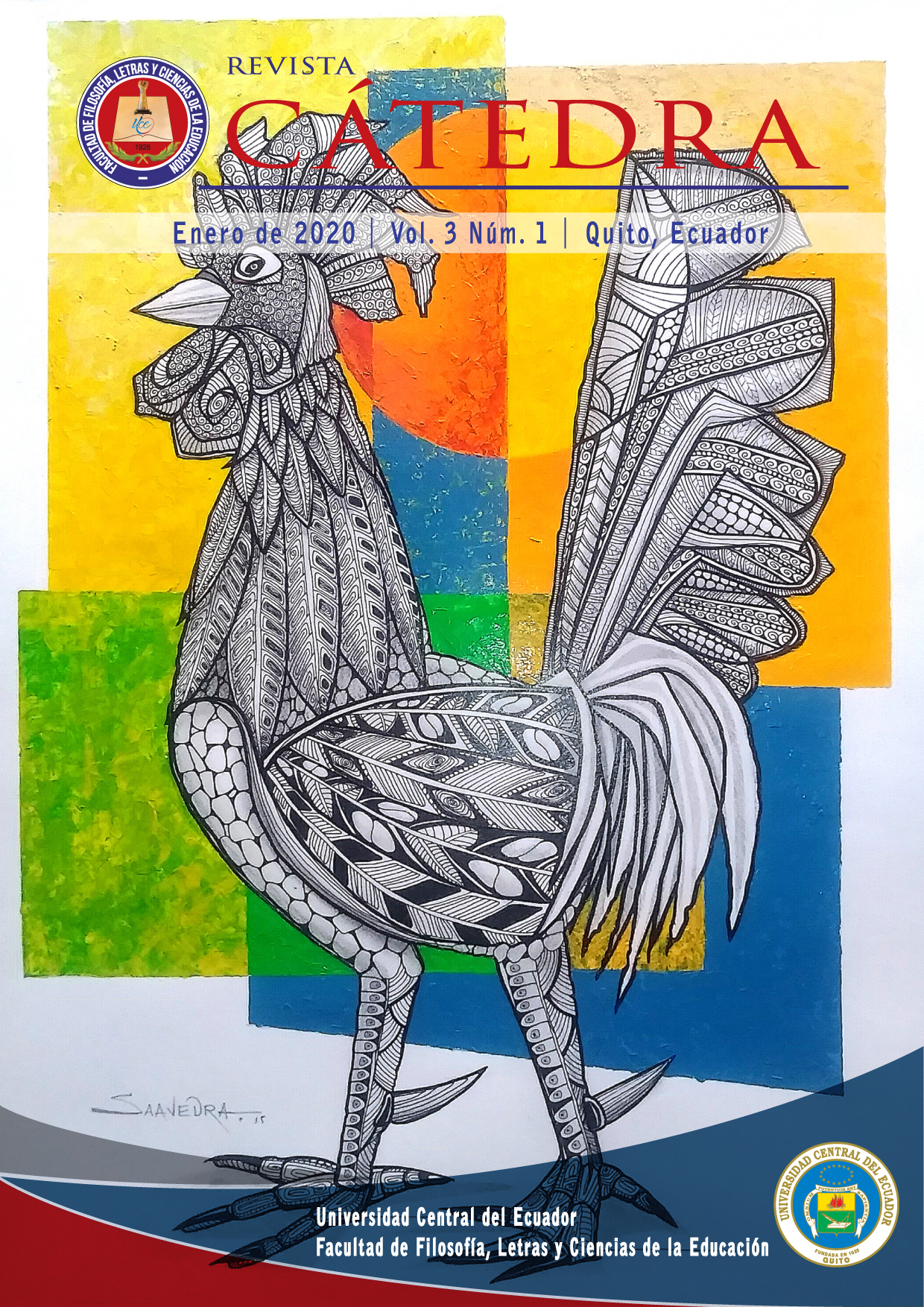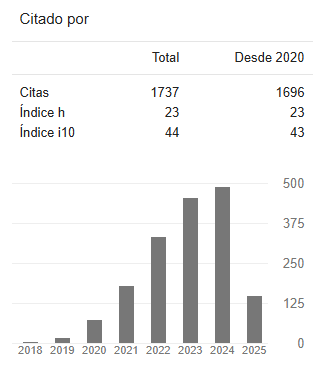Use of SCRATCH in Learning Programming in Higher Education
DOI:
https://doi.org/10.29166/10.29166/catedra.v3i1.2006Keywords:
computing, teaching, language, thinking, programming, ScratchAbstract
In recent years, the term computational thinking and Scratch programming language have broken into the teaching stage, primarily at the level of elementary and high school education. However, there are no studies that support the use of Scratch language at a higher level, thus the aim of this research was the verification of the development of computational thinking among the students of the First Semester of the Computer Science Degree of the Central University of Ecuador based on the eight dimensions of computational thinking that are: identification of patterns, use of instructions, variables, sequence, operators, reuse, abstraction, operation and error detection. For this purpose, a quasi-experimental design with pre-test-post-test and intact groups was applied, with a quantitative, field approach with documentary support and explanatory level. Subsequently, the SPSS tool was used for the statistical analyzes, both for the calculation of the measures of central tendency and the standard deviation, as well as in the verification of the hypotheses by means of T tests and in the elaboration of statistical figures. The results obtained evidenced a greater development in the levels of computational thinking with the students of the First Semester of the Computer Science Career of the Central University of Ecuador who used Scratch.
Downloads
References
Alba, R. (2008). Iniciándose en la programación con Scratch. Observatorio Tecnológico del Ministerio de Educación, Cultura y Deporte de España. Retrieved from http://recursostic.educacion.es/observatorio/web/fr/software/programacion/619-iniciandose-en-la-programacion-con-scratch?format=pdf
Andrade, X. (2013). Guía para la elaboración de pruebas de base estructurada. Quito: Universidad Central del Ecuador. Retrieved from http://es.slideshare.net/italito/guia-para-la-elaboracin-de-pruebas-de-base-estructurada
Cabero, J., Castaño, C., Cebreiro, B., Gisbert, M., Martínez, F., Morales, J: y Prendes, M. (2003). Las nuevas tecnologías en la actividad universitaria. Pixel Bit. Revista de Medios Y Educación, 20, 81–100. Retrieved from http://acdc.sav.us.es/ojs/index.php/pixelbit/issue/view/37
Hitschfeld, N., Pérez, J. y Simmonds, J. (2015). Pensamiento computacional y programación a nivel escolar en Chile: el valor de formar a los innovadores tecnológicos del futuro. Bits de Ciencia, 12, 28–33.
Isuri, S. (2010). Scratch Guía Didáctica para Profesores. Isuri Sormenezko Zerbitzuak Servicios Creativos. 4-7. Retrieved from https://bit.ly/2S3whsK
López, J. (2015). Programación con scratch cuaderno de trabajo para estudiantes. Fundación Gabriel Piedrahita Uribe. Cuarta edición. 11. Retrieved from http://eduteka.icesi.edu.co/pdfdir/AlgoritmosProgramacionCuaderno1.pdf
Martínez, F. (2001). El profesorado ante las nuevas tecnologías. In C. y T. Junta de Extremadura. Consejería de Educación (Ed.), Sociedad de la información y Educación (pp. 195–218). Mérida. Retrieved from https://bit.ly/2s1fjk5
Mittermeir, R. y Syslo, M. (2008). Informatics Education-supporting Computational Thinking. (M. Mittermeir, R y Syslo, Ed.) (1st ed.). Berlín: Springer. Retrieved from https://bit.ly/2Zawcoz
Nančovska, I., ŠerbecTernik, Z., Koron, A. y Koron, T. (2017). Learning Programming Concepts through Maze Game in Scratch. Retrieved from https://www.researchgate.net/publication/320170373_Learning_Programming_Concepts_through_Maze_Game_in_Scratch
Pascual, J. (2015). Scratch, programación sencilla y gratis para niños y mayores. Retrieved from https://computerhoy.com/noticias/software/scratch-programacion-sencilla-gratis-ninos-mayores-37925
Pérez, G. y Addati, G. (2013). Documentos de trabajo: Tecnologías Ubicuas. Editor Jorge M. Streb. Nro. 531. 1-2. Retrieved from https://ucema.edu.ar/publicaciones/download/documentos/531.pdf
Pérez, H. y Roig, R. (2015). Entornos de programación no mediados simbólicamente para el desarrollo del pensamiento computacional. Una experiencia en la formación de profesores de Informática de la Universidad Central del Ecuador. RED. Revista de Educación a Distancia, 14(46), 1–22. Retrieved from http://www.um.es/ead/red/46/rosabel.pdf
Pérez, H. (2017). Uso de Scratch como herramienta para el desarrollo del pensamiento computacional en programación I de la carrera de informática. Universidad Central del Ecuador. (23). Retrieved from https://rua.ua.es/dspace/bitstream/10045/82731/1/tesis_hamilton_omar_perez_narvaez.pdf
Raja, T. (2014). We can code it!. Retrieved from http://www.motherjones.com/media/2014/06/computer-science-programming-code-diversity-sexism-education
Sáez, J., Miyata, Y., y Domínguez, M. (2016). Creative Coding and Intercultural Projects in Higher Education: a Case Study in Three Universities / Codificación creativa y proyectos interculturales en Educación Superior: Un estudio de caso en tres universidades. RIED. Revista Iberoamericana de Educación a Distancia, 19(2), 145–165.
Taborda, H. y Medina, D. (2012). Programación de computadores y desarrollo de habilidades de pensamiento en niños escolares: fase exploratoria. Cali: Universidad ICESI.
Weiser, M. (1991). The Computer for the 21st Century. Scientific American Ubicomp Paper. Retrieved from https://www3.nd.edu/~cpoellab/teaching/cse40463/weiser.pdf
Wing, J. M. (2006). Computational Thinking. Communications of the acm /Vol. 49, No. 3. Retrieved from https://www.cs.cmu.edu/~15110-s13/Wing06-ct.pdf
Zapotecalt, J. (2015). Pensamiento computacional. Curso Pensamiento Computacional. Puebla: Instituto Nacional de Astrofísica, Óptica y Electrónica de Puebla. Retrieved from http://www.pensamientocomputacional.org/index.php/home/menu-definicion
Downloads
Published
Versions
- 2020-11-17 (4)
- 2020-11-17 (3)
- 2020-09-03 (2)
- 2020-01-22 (1)









